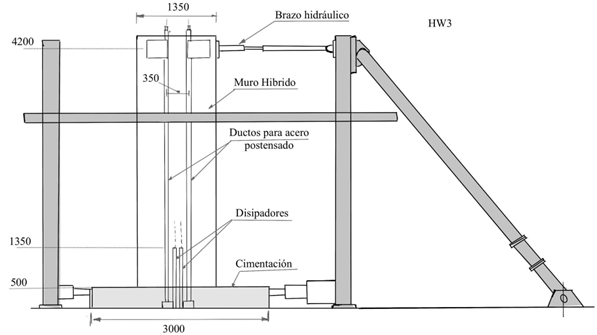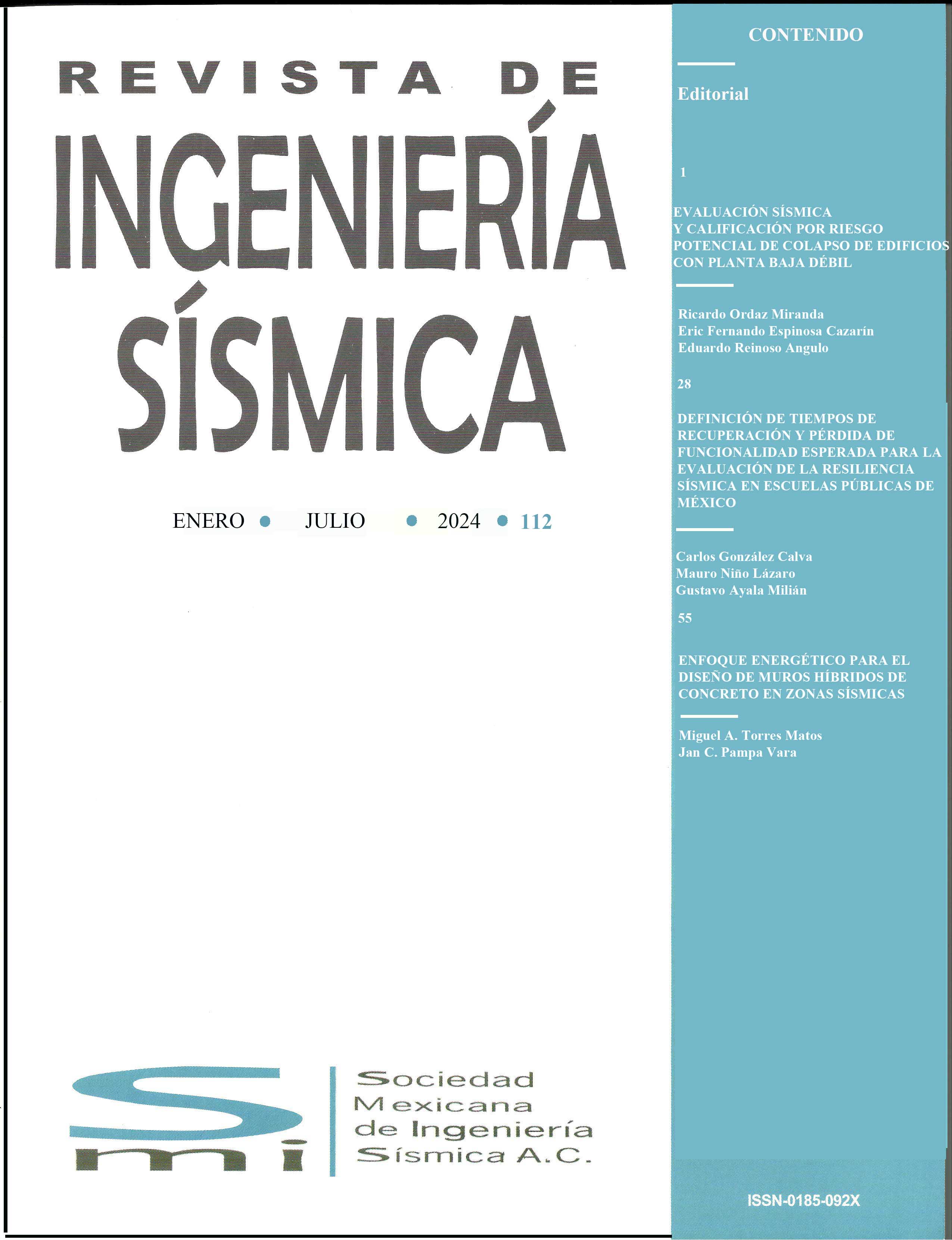ENFOQUE ENERGÉTICO PARA EL DISEÑO DE MUROS HÍBRIDOS DE CONCRETO EN ZONAS SÍSMICAS
DOI:
https://doi.org/10.18867/ris.112.646Palabras clave:
muros híbridos, disipador de energía, postensado, recentradoResumen
En este artículo se emplea un enfoque energético para validar algunos modelos numéricos que pueda representar la respuesta global de muros híbridos, bajo la acción de cargas laterales de tipo cíclicas reversibles. Los resultados numéricos obtenidos fueron comparados con resultados experimentales, mediante el cálculo de la energía disipada por los muros estudiados, Además, se valuó el comportamiento de los “disipadores de energía” del muro, formados por barras de acero corrugado, que pasan a través de la junta entre el muro prefabricado y la cimentación. Otro elemento importante es el cable de acero de presfuerzo, que atraviesa al muro mediante un postensado, en toda su altura, desde el extremo superior del muro hasta la base de la cimentación. El cable de postensado, es el que genera en el muro un comportamiento de recentrado, que combinado con los “disipadores de energía” logran un sistema que puede controlar desplazamientos excesivos, con daños poco relevantes. Se emplearon los resultados experimentales reportados por Smith et al. (2012), y Rahman y Restrepo (2000) de muros híbridos sólidos rectangulares, HW1 y HW3, respectivamente. Adicionalmente, se realizó una comparación de la cantidad de energía disipada, entre los muros analizados y muros convencionales monolíticos, de dimensiones y características similares.
Descargas
Citas

Descargas
Publicado
Versiones
- 2024-07-19 (2)
- 2024-06-28 (1)
Cómo citar
Número
Sección
Licencia
Derechos de autor 2024 Revista de Ingeniería Sísmica

Esta obra está bajo una licencia internacional Creative Commons Atribución-NoComercial 4.0.






